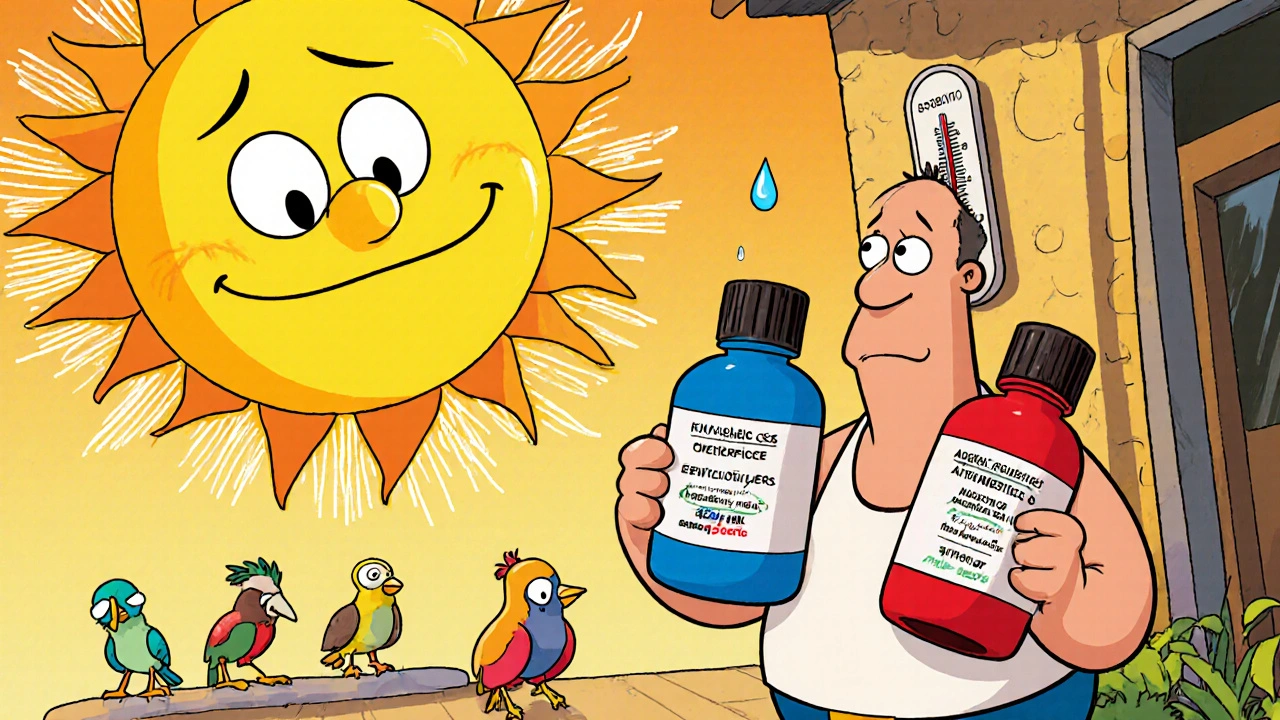Heat Illness: Understanding Risks and Prevention
When dealing with heat illness, a range of conditions caused by excessive body heat, often from high temperatures or strenuous activity. Also known as heat‑related disorders, it can quickly progress from mild discomfort to life‑threatening states. Among the most common forms are heat exhaustion, a milder syndrome marked by heavy sweating, weakness, and nausea and heat stroke, the severe end‑point where the body’s core temperature spikes above 40 °C, leading to organ damage. Heat illness encompasses these sub‑conditions, requires immediate attention, and often stems from inadequate fluid balance.
Risk factors stack up fast. Dehydration, for instance, dehydration, a loss of body water that reduces cooling efficiency directly influences how quickly heat illness escalates. Athletes, outdoor workers, and older adults are especially vulnerable because their bodies either generate more heat or lose the ability to regulate temperature effectively. Heat cramps—sharp, involuntary muscle contractions—are another symptom that signals the body’s electrolyte balance is off track. The chain reaction is clear: insufficient fluid intake leads to dehydration, dehydration raises core temperature, and elevated core temperature can trigger heat cramps, exhaustion, and eventually heat stroke, which may cause organ failure if untreated. Understanding these connections lets you spot warning signs early and act before the condition worsens.
Practical Ways to Stay Safe in the Heat
Prevention starts with simple habits. Drink water before you feel thirsty, and replace lost salts with sports drinks or electrolyte solutions during prolonged exposure. Wear lightweight, loose‑fitting clothing that allows sweat to evaporate, and seek shade or air‑conditioned spaces during peak temperature hours. Gradual acclimatization—slowly increasing time spent in the heat over 7‑10 days—helps the body adapt its cooling mechanisms, reducing the likelihood of heat exhaustion. If you notice early signs such as dizziness, excessive sweating, or muscle cramps, move to a cooler area, hydrate, and monitor your symptoms. Effective steps to control heat illness start with these basic precautions, and knowing when to seek medical help—especially if confusion, loss of consciousness, or a body temperature above 40 °C occurs—can be lifesaving.
The articles below dive deeper into related health topics that often intersect with heat stress, from medication tolerance and chronic fatigue to supportive therapies for bone‑marrow disorders. Explore each piece to see how broader health factors can amplify or mitigate the impact of heat illness, and discover actionable tips you can apply right away.




